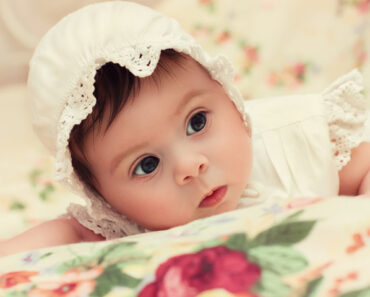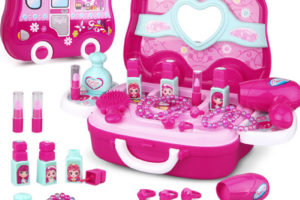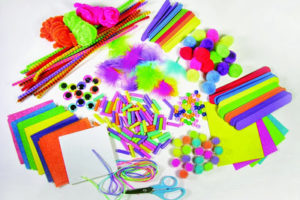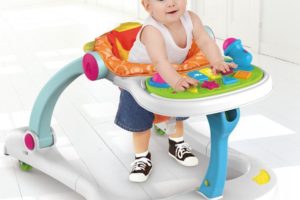With my first baby, I shared many of the same challenges as the other worried, overtired and overwhelmed new moms in our playgroup—breastfeeding struggles, sleep regressions and battles with diaper rash. But there was always one thing none of the other parents could relate to: my son’s plagiocephaly, a.k.a. flat head syndrome.
At my son’s two-month appointment, the paediatrician found a flat spot on the left side of his skull. There wasn’t anything wrong with his brain, thankfully, but his head was misshapen. She recommended that we roll up a receiving blanket and place it on the left side of his head while he was awake in the car seat or stroller so he would be forced to look right, letting the left side “pop out.”
I was confident we could fix the flat spot by the next appointment. My husband and I were vigilant about making sure the receiving blanket was in place at all times, but the spot on his head became flatter. At our three-month appointment, the doctor began discussing helmet therapy—called cranial orthosis—with us. Our son had a cranial deformity. I was shocked—truly in disbelief—because all I could see was a beautiful baby who was perfect in every way.
Our paediatrician’s son wore a helmet as a baby, so she didn’t sugar-coat the process. “It’s going to be tough,” she said. “But your son might thank you for his round head later in life.”
Except I was opposed to putting a helmet on my son and immediately said no to the idea. It seemed unnecessary and cruel—we would be confining our child’s head, and it looked uncomfortable.
I sat awake that night with thoughts of the helmet swimming through my head. Would my son feel insecure about the flat spot when he was older? Was the flat spot my fault? Why can’t my son talk so he could let me know what he prefers? Helmet or no helmet?
I decided to go through with helmet therapy because I feared my son would hold the flat spot against me when he was older.
A week later, we were sitting in a room at the Children’s Hospital in Oakland with the prosthetics specialist. He measured our baby’s head with a scanner and showed us how helmet therapy worked. The baby’s head is confined to the helmet, and in areas where it’s flat, the helmet allows space for it to grow.
We were handed a sheet of helmet themes and colours and encouraged to pick one. Was our four-month-old son a zoo animals kind of baby, a princess fan or a San Francisco Giants lover? The choices swirled chaotically through my brain. It felt like I was choosing an identity for my son, and he couldn’t even sit up yet! Overwhelmed, I handed the options to my husband. He chose the galaxy theme.
Ten days later we returned to the hospital to pick up the helmet and have it sized to my son’s head. My son squirmed as the specialist placed the helmet on him. I began to tear up as my baby began to whimper, while the specialist made adjustments, shaving the foam interior of the helmet. Afterwards, I was sent home with a fussy baby who clumsily touched his new headgear.
I followed the instructions, making my son wear the helmet for 23 hours a day with a measly one-hour break. When I took it off for the first time, his head was sweaty, his peach-fuzz hair matted to his head. More than anything in the world, I wanted my son to tell me how he felt in the helmet. Was he uncomfortable? In pain? Every time he cried or was unable to sleep, I blamed the helmet.
We had a standing appointment every two weeks to adjust the interior of the helmet. However, my son’s head was growing at a rapid pace. After a week, he began to have abrasions on parts of his head where the helmet rubbed against the skin. One night, my husband came home and our son was lying on the play mat—without the helmet.
“Where’s the helmet?” he asked.
“In the closet. I’m done,” I cried. “Look at the marks on his head!”
We had the first of many lengthy fights about the helmet. I always wanted to stop helmet therapy. My husband wanted to continue.
The helmet was also a non-stop discussion with my therapist. “Why don’t you just put your foot down and stop helmet therapy?” she continually inquired. I would cry, shaking my head. I didn’t have an answer.
It felt like everyone was telling me that helmet therapy would be beneficial for my son in the future, and because of my postpartum depression, I didn’t trust myself or my logic. I felt like I was walking in a fog with a broken compass. I relied on my husband’s guidance through those early stages of motherhood because I believed he had a better handle on reality than I did. So my son continued to wear the helmet.
At the time, we lived in a studio apartment in downtown Berkeley, and we rarely used our car. I walked everywhere with my son in a baby carrier, his helmet on full display. Some people pointed and stared while others laughed at my son, which, as you can imagine, made my blood boil. After a particularly bad sleepless night, I deliriously screamed at a group of high school students to stop gawking at my son. Not one of my finest moment as a mother—but I was really struggling.
I have to admit that while some gestures from strangers made me furious, others made me laugh. A group of older men who hung out in the park next to our apartment building would say things like “He’s ready to be drafted into the NFL,” or “Astronaut baby is ready to board the spaceship.”
The most unexpected thing about the helmet, other than the roller coaster of emotions, was the assumptions people made about the reasons my son wore it. Some thought it was for seizures, while others thought it was because my son liked to bang his head.
The most comforting thing was when mothers would come up to me and tell me that their child wore a helmet and how difficult the process was.
One mom in Trader Joe’s told me her daughter wore a helmet for eight months and that she felt my pain. I instantly broke down crying, holding a sack of Granny Smith apples with my son strapped to my chest. It was at that moment that I felt that my emotions tied to the helmet were justified. I was not alone.
After four emotional months, I ended my son’s helmet therapy. We could have continued, but I finally put my foot down. I was done with the adjustment appointments, the marks on his head and constantly wondering whether he was uncomfortable.
Helmet therapy didn’t make my son’s head entirely round, but it helped a great deal. Last month, I saw a baby in a helmet and told my now five-year-old son that at one point, he too wore a helmet. Almost instinctively, I touched the side of his head and tried to feel for what remained of the flat spot.
This story was originally published in September 2018.
































